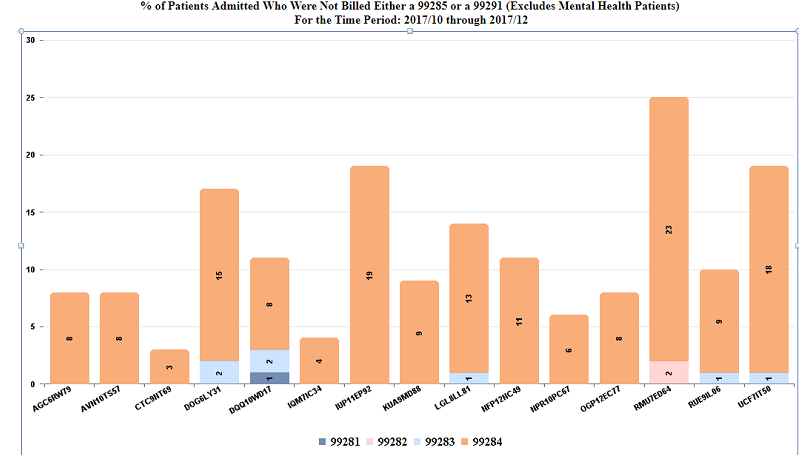At d2i, we work with our clients to find the gaps in their data. Our analytics solutions help identify issues and training opportunities for clinicians.
The first requisite for being able to analyze your emergency department’s data is to be sure it’s accurate to begin with
The overwhelming number of ICD codes used in the medical coding system allows ample room for human error. Whether mistakes involve upcoding, downcoding, or typos, errors and omissions have long been the cause of headaches for providers and HCOs.
The Bottom Line
Coding inaccuracies in an emergency department (ED) can affect a practice’s and a hospital’s bottom line. Medicare and commercial reimbursement delays, as well as an increasing number of denials, are the result of the inaccuracy of the documentation captured in the EHR.
Bad Data In
While incomplete and bad data can impact reimbursement, it can also cause errors in an HCO’s health care analytics tool. A crucial factor in being able to provide effective analytics at the provider level involves ensuring that patient data captured in the EHR is accurate. To be trustworthy, data must be accurate, consistent, and complete.
Reputation Management
Hospital and physician review sites like Healthgrades rely heavily on coding information as a method of measuring quality of care. With more consumers turning to online reviews to seek the best hospitals, a low ranking can directly impact reputation and market share.
For these reasons, data accuracy and its impact on coding is a concern; not only because of its impact on reimbursement and analytics, but also on an HCO’s reputation.
Drawing Conclusions From Incomplete Data
A recent report published by the Health Care Cost Institute (HCCI) stated that hospital coding and billing practices, for an increased number of severe cases, led to an 85 percent surge in ED expenditures between 2009 and 2015. The report claims that there was significant variance in service charges and that expenditure rates increased by more than 100 percent.
While the American College of Emergency Physicians (ACEP) disputed the findings because of potential conflicts of interest, the report nonetheless highlights the importance of accurate and complete data for analytics to be the enabler for process improvement initiatives.
How Can Data Analytics Improve Coding Practices?
d2i helps HCO’s find gaps by ensuring their data is cleansed, normalized, and integrated seamlessly. We work with our clients to identify erroneous or inconsistent data and provide the analytics necessary to help correct the underlying cause.

The majority of emergency department admissions are ultimately coded at an EM level 5 or critical care. d2i identifies outliers so that you can review charts and ensure that your providers are documenting accurately.
Contact d2i to learn how we can help your department eliminate coding errors for better, more actionable data, or schedule a 30-minute demo and see why no other health care analytics tool or EHR system compares.
